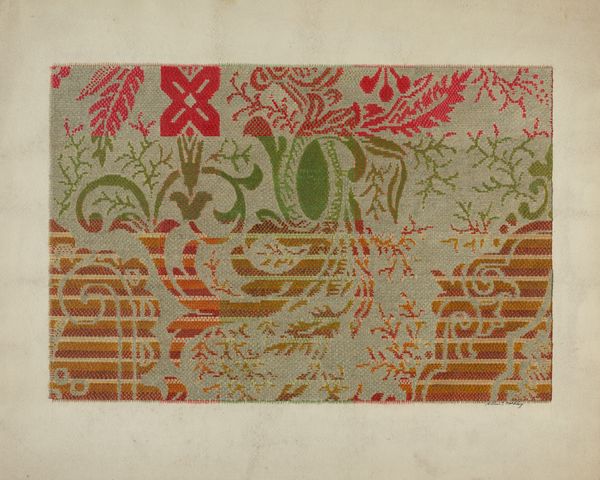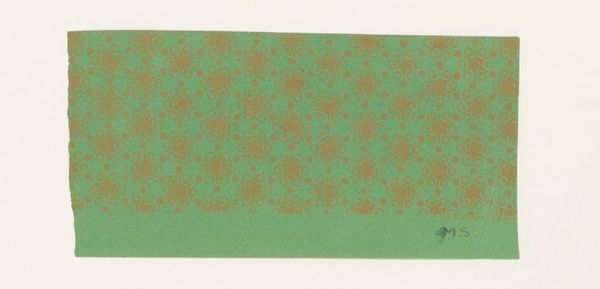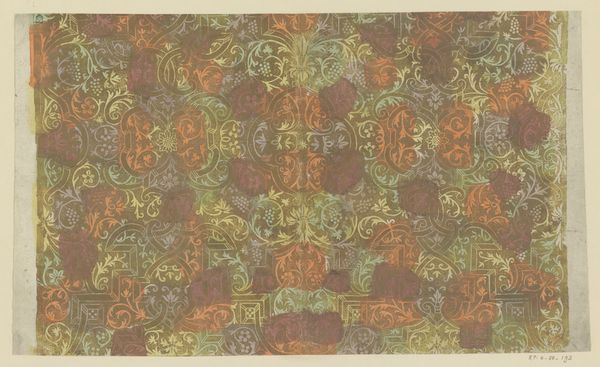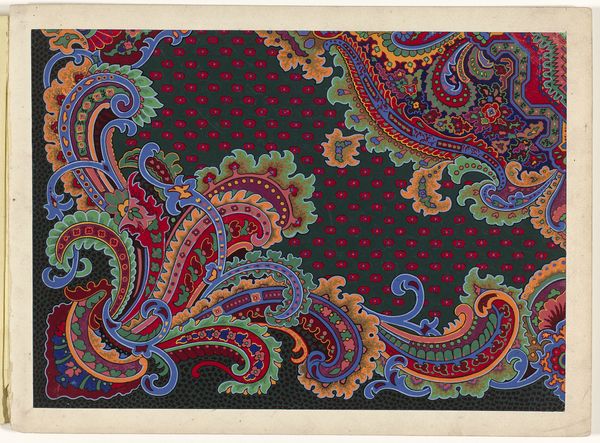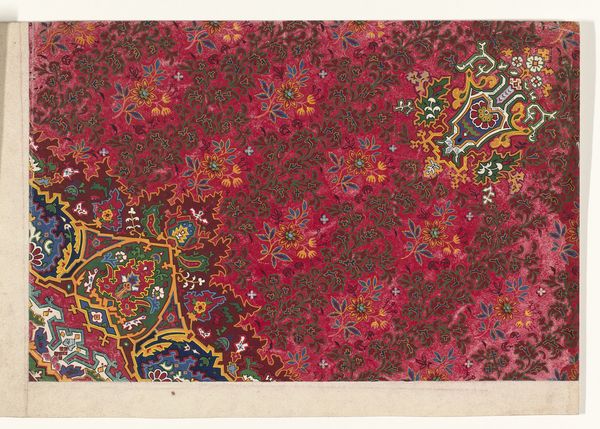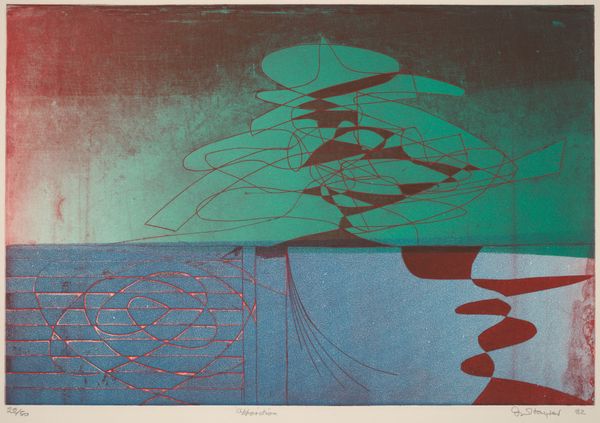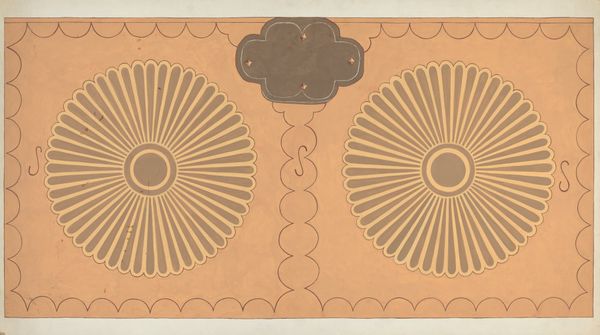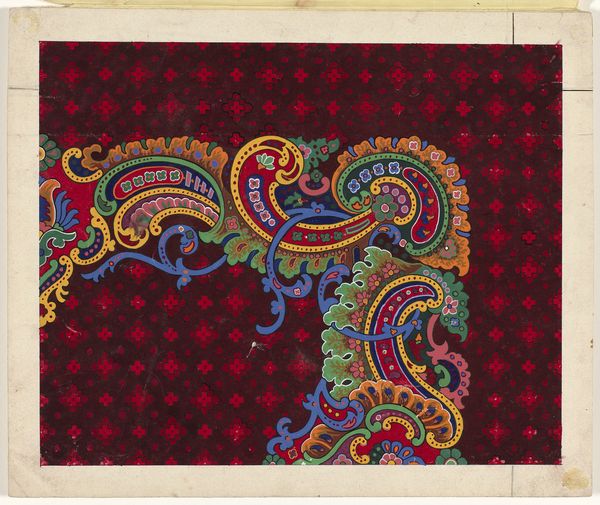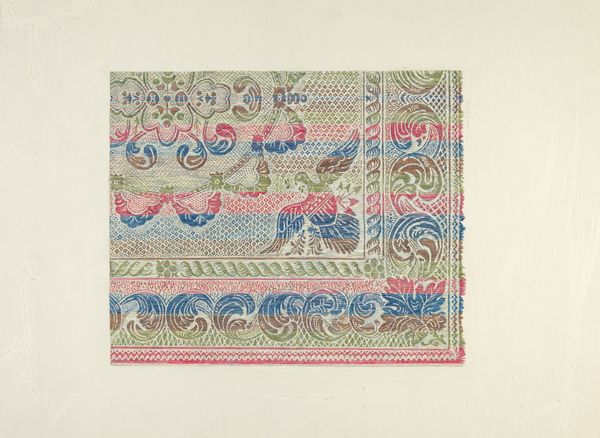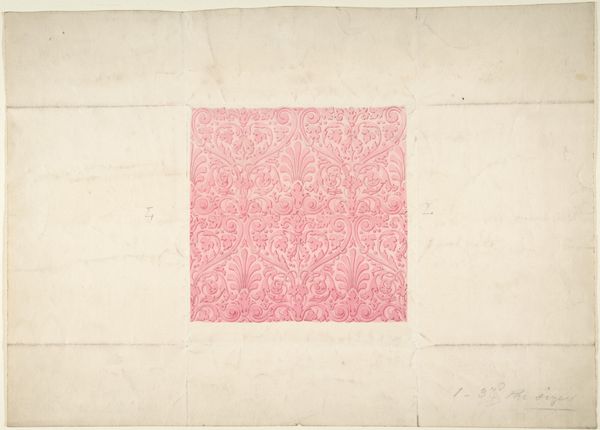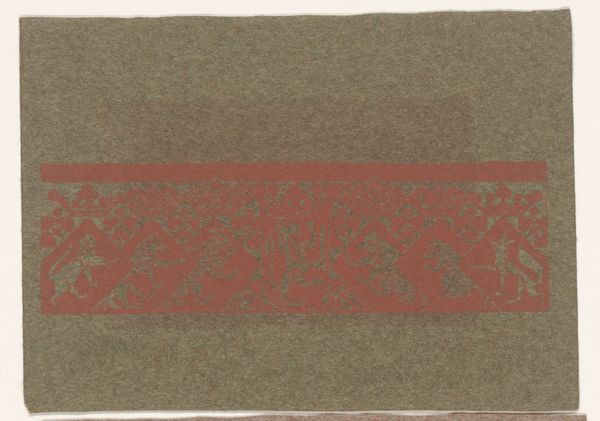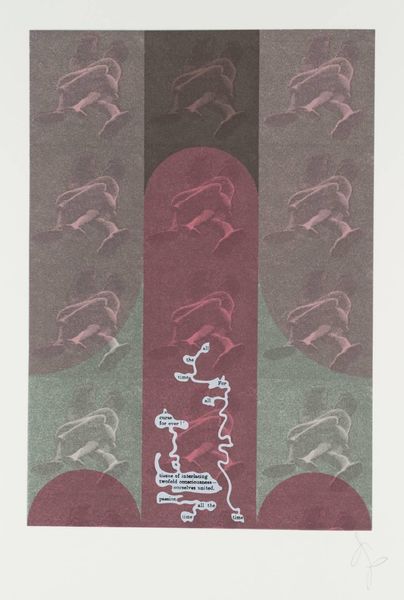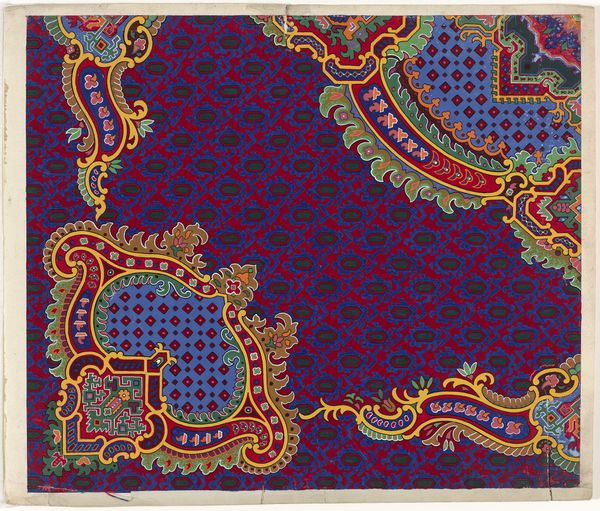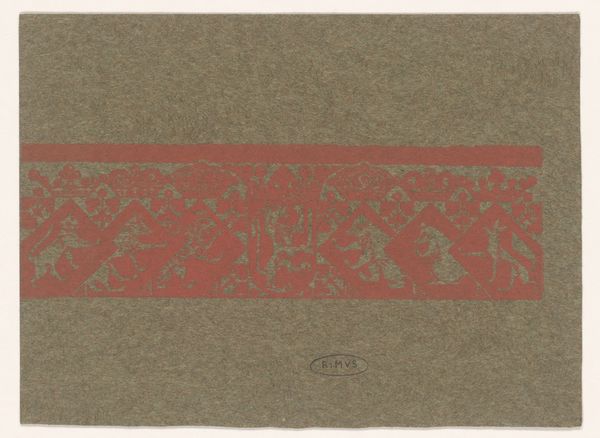
textile
#
textile
#
geometric pattern
#
organic pattern
#
geometric
Dimensions: overall: 41.1 x 54.6 cm (16 3/16 x 21 1/2 in.)
Copyright: National Gallery of Art: CC0 1.0
Editor: Here we have "Carpet," a textile drawing from around 1940 by Arthur G. Merkley. The bold red and green patterns are striking. What do you see when you look at the means of its creation? Curator: This piece draws my eye not just to the visual pattern, but to the potential labor involved. Consider the processes inherent in textile production at the time. Was this intended as a study? A prototype? What socioeconomic conditions supported textile production in 1940? Was this potentially meant for mass production, thus exploiting factory workers, or created for a more niche market by skilled laborers? Editor: That's interesting. I was so focused on the aesthetics. What do you mean by "socioeconomic conditions"? Curator: Well, consider the availability of materials, the costs of labor, and the targeted consumers. Are those complex, swirling organic motifs signs of luxury, indicating more time dedicated to production, or were there advances in mechanization that sped up the process? And look at the colors—the intensity of the red likely involves specific dyes and dying techniques; how readily available would those have been, and at what environmental cost? Editor: So, you’re suggesting that the beauty of the object masks potentially complex production and economic issues? Curator: Precisely. A materialist perspective challenges the traditional emphasis on artistic genius, urging us to consider the conditions of its creation. What looks like an appealing pattern might, upon closer examination, reveal imbalances of labor, and perhaps even obscured social hierarchies. Editor: I hadn’t considered that the organic versus geometric patterns could hold any significance, beyond being, well, pretty to look at. Now I’m curious to explore how the textile industry functioned at the time this was created. Curator: Exactly! It's not just about appreciating the design, but about understanding the forces that shaped its production. Hopefully that changes our perception of the piece, revealing new and nuanced readings!
Comments
No comments
Be the first to comment and join the conversation on the ultimate creative platform.
